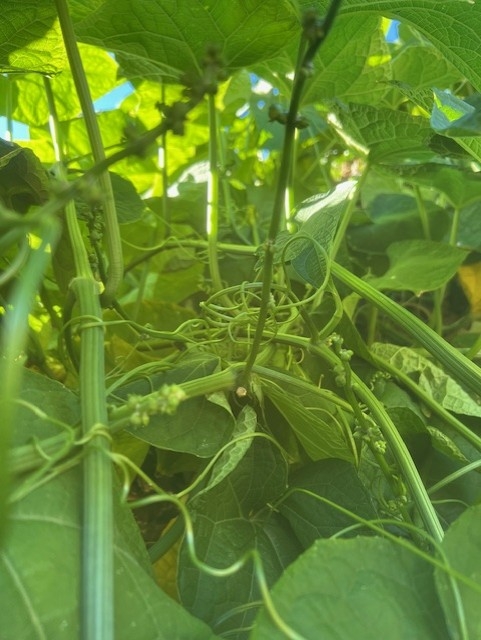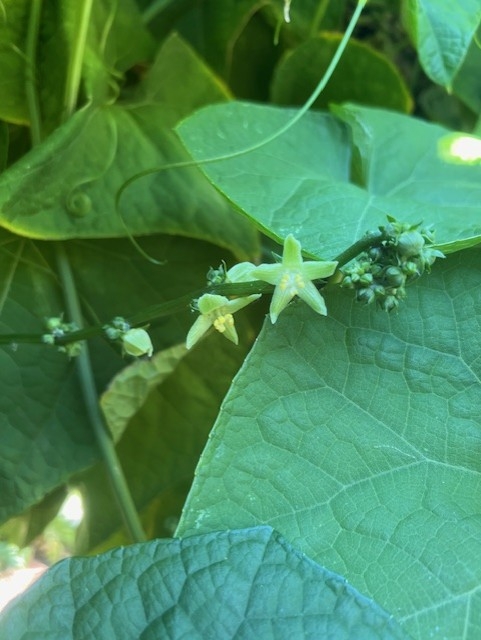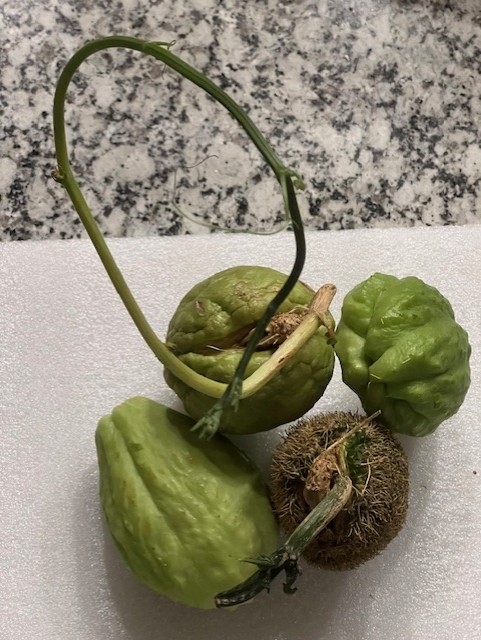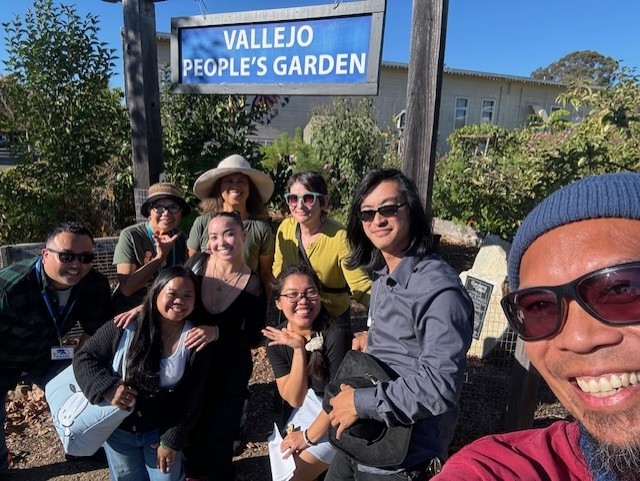Posts Tagged: y
Momijigari
I have recently been slowly reading The Japanese Art of Living, An Invitation to Celebrate Every Day, by Natalie Leon (Watkins Publishing, 2024). The Japanese have 72 micro seasons and pay much closer attention to nature. In fall, they look for the changing color of tree leaves, a custom called momijigari, translating to red maple leaf hunting but actually incorporating all trees' colors. They even put out a fall foliage forecast for the country so people can get out into nature and observe the changing colors.
I am not Japanese, but I have been looking at autumn's leaves changing for years. Pre-pandemic my husband and I would travel to Hope Valley and the Eastern Sierra in the fall to hike and look at the leaves. These days, we travel closer to home, and I walk around Vacaville and the arboretum at UC Davis, searching for the changing colors. I also follow the color changes online, and I know that Hope Valley had its peak in early October. I have noticed that the first tree color to appear near me in autumn seems to be orange. Maybe it's because there are so many crape myrtles near me. The second color is red – Chinese Pistache and maples. These are prevalent now, but finally, the yellows are just starting to appear: cottonwoods, boxelders. My favorite, the gingko, needs some cooler weather and shorter daylight hours, and typically, their leaves change to yellow later than other trees around here. As the tree's chlorophyll, nature's UV radiation protector, starts to decrease, the leaves' original pigment emerges. This process, plant senescence, is how the tree recycles nitrogen and other nutrients. Momijigari's dates are listed as November 2nd through the 6th in the book, in case you want to catch a quick flight to Japan. Or you can enjoy the leaf changes right at home.

photos by Michelle Davis

IMG 1135

IMG 1105
Entomologist Jeff Smith: The Master Builder of Insect Specimen Drawers
When you slide open the butterfly and moth drawers at the Bohart Museum of Entomology, UC Davis, the color, size and shape of the specimens...

Jeff Smith, curator of the Lepidoptera collection at the Bohart Museum, stands by the drawers he crafted. (Photo by Kathy Keatley Garvey)

The Bohart Museum drawers are intricately crafted. This one is of pine. Curator Jeff Smith has crafted and donated 2,487 of them for the Bohart Museum of Entomology. (Photo by Kathy Keatley Garvey)

Close-up of a drawer in the Lepidoptera collection, Bohart Museum of Entomology. (Photo by Kathy Keatley Garvey)
Filipino Cultural Vegetables at the Vallejo People's Garden
Filipino-American History Month (FAHM) is a yearly event in October to commemorate the arrival of the first Filipinos in the continental United States at what is now Morro Bay, California on October 18, 1587.
On October 15, we celebrated Fil-Am History Month at the Vallejo Peoples Garden (VPG) by doing a presentation on Filipino cultural vegetables. A group of Filipino-American students and faculty from Solano Community College attended the event.
I presented two vegetables extensively cultivated in the Philippines and grown at VPG on Mare Island:
CHAYOTE
Chayote is a perennial vegetable vine that grows abundantly in the Philippines. Here in Solano County, chayote is a perennial vegetable and often grown as an annual.
The chayote fruit comes mostly in green or yellow green smooth skin; or dark green color with sharp spines on the skin. (Ouch on the latter so be careful when handling)! We planted our first organic chayote vine at VPG with the green/yellow skin three years ago and are now growing the dark green spiney chayote since last year.
The chayote fruit is irregularly oval-shaped and grooved. The large edible seed is surrounded by meaty flesh. A prolific vine grower, one plant can produce 60-80 palm-sized fruits. Our harvest last year yielded more than that I believe.
HOW TO GROW CHAYOTE
• Look for an older fruit with tough skin. Buy organic chayote if available at your local grocery.
• Leave the fruit on the kitchen counter until the sprout emerges. Chayote seed sprout will germinate only inside the fruit.
• Plant the whole fruit in a pot with the tip of new growth just peeping out of the soil.
• Leave the chayote in the pot until the last frost danger is past (late March/early April).
• Set the fruit in the ground edgewise and slanted.
• Plant the vine in rich, well-drained soil next to a sturdy fence or trellis where it will climb by tendrils.
• Some literature says two plants are required for cross-fertilization. Others say, “Bury lone fruit, produce an epic plant.” At VPG, we only planted one fruit.
• Chayote requires full sun and deep watering at least once a week. Mulch around the vine for moisture retention.
• Chayote is a long-season growing plant; the vine can grow 30 ft. or more before it starts blooming.
• Sprays of green blossoms will appear when the days begin to shorten.
• Chayote fruiting can begin in October until the earliest frost.
• At the Vallejo Peoples Garden we cut back the vine close to the ground after fruiting leaving only a few good stalks. We mulch heavily around the plant to conserve moisture. Where the ground freezes, the root tubers can be dug up and stored for replanting in the springtime.
CULINARY USES OF CHAYOTE
All parts of the chayote vine are edible: from the root tubers to the tender tips of the vines.
. Chayote has a subtle taste; it is adaptable to the flavor of other ingredients like tofu.
• It is used in Indian chutneys, Asian stir-fries, French quiches and New Orleans pies.
• Chayote can be used as a substitute for squash, cucumbers and potatoes.
• It can be pickled or eaten raw in salads.
• Mexicans steam the fruit, dip it in salsa, or use it in stews.
• I stir-fry chayote with shrimp, tomatoes, and mushrooms.
I also use it as an ingredient for making pancit (noodles) and chicken soups.
Truly, chayote is a versatile vegetable and you can expect a bumper harvest from only one plant!
I will cover the next cultural vegetable on my next blog.
Meanwhile, happy chayote planting!

Chayote plant. photos by Elvie Deleon

Chayote flowers.

Chayote fruit.

VPG students. photographer unknown
Franco: Deciphering Soil Macrobiome and Ecosystem Responses to Global Change
It promises to be an outstanding seminar. André Custodio Franco, assistant professor, Indiana University, Bloomington, will speak on...

What's up with soil and global change? Andre Franco of Indiana University will speak on "Deciphering the Soil Macrobiome: Belowground Communities Driving Ecosystem Responses to Global Change" at 4:10 p.m., Monday, Nov. 18 in 122 Briggs Hall. It also will be on Zoom and then archived. (Photo by Kathy Keatley Garvey)
Virtual fencing ‘game-changer’ for ranchers grazing cattle
Tech can save ranchers time and benefit animals and land, becoming more viable
After the Caldor Fire destroyed seven miles of fencing on their cattle ranch in 2021, Leisel Finley and her family needed to replace the fence.
Finley, a sixth-generation rancher at Mount Echo Ranch in Amador County, said reconstruction costs were bid at $300,000 and would take at least a year to build, leaving the family without summer pasture and a herd of hungry cows to feed. Additionally, the U.S. Forest Service mandates that grazing be withheld for two years in postfire landscapes. This put the family in a difficult position.
While watching a recording of a California Cattlemen's Association meeting, Finley learned about a pilot program for virtual fencing. Desperate to find an alternative solution, she registered to try the livestock containment technology, which uses GPS enabled collars to monitor each animal's location in near real time.
Livestock producers can draw a perimeter on a map of their pasture using a laptop or smartphone application and send those instructions to the collar. The collar then uses audio and tactile cues to contain the animal in the area.
Eager to discover the short- and long-term benefits of virtual fencing, Finley turned to Scott Oneto, farm advisor, and Brian Allen, assistant specialist, from the University of California Cooperative Extension office in the Central Sierra. Since partnering with Oneto and Allen, Finley said she has come to understand and uncover more of the technology's potential.
The team has consistently observed the technology's value in integrating with and enhancing traditional livestock production systems across California. Though still in its early stages of development, the location tracking and containment system appears to provide time- and cost-savings that make it a game-changer for ranchers.
Ability to monitor location of animals in real time
Virtual fencing really stands out in its ability to monitor each animal's location in real time. During roundups, ranchers can use their smartphones to see their own location relative to their herd. The system can also send alerts if an animal crosses the virtual boundary or if a collar remains stationary for an extended period, potentially indicating that the animal is sick or that the collar has fallen off.
Rounding up cattle on large, forested grazing allotments can be challenging, as the process generally requires a group of people and many return trips to find every animal. Prior to virtual fencing, Finley and her father could gather about 85% to 90% of the herd in a week. Since using virtual fencing, Finley said one of their most recent roundups lasted three days, and they located every single cow.
Something that every livestock producer dreads is the notorious call from a neighbor or California Highway Patrol alerting them that one of their cows is out in the middle of the road. It always seems to happen at midnight or while they are out with friends or family. This scenario changes with virtual fencing.
Containment based on animal behavior
The containment system that virtual fencing is built on is based on animal behavior. When the animal crosses an invisible boundary, the collar emits an audio warning, prompting most animals to instinctively turn back into the desired area. If the animal doesn't respond, the collar delivers a mild electric pulse as a secondary deterrent.
Field trials by Oneto and Allen demonstrated the system's success. Recently, the team trained a herd of 37 cattle of mixed ages that had no previous exposure to virtual fencing. During the initial six-day training period, the cattle responded to the audio warning alone about 75% of the time when they approached a virtual fence boundary, with the remaining 25% of cases requiring an electric pulse.
After about three weeks, the herd was responding to audio cues alone about 95% of the time. The field trials also showed that the collars contain the livestock within the desired areas 90% to 99% of the time when the entire herd wears virtual fence collars and their basic needs for safety, connection to the rest of the herd, water, forage, shade, etc. are met.
Opportunities for improvement
While the technology is effective in its current capacity, there are notable areas where it can improve. One limitation to the system is the current reliance on cellular networks to operate. If an animal wanders into an area outside of coverage, the collar will continue to operate based on the last instructions but won't receive updates or report locations. This is especially a concern in many areas of California with poor cell reception, including the steep forested rangelands where many livestock producers have summer grazing allotments.
Another limitation is that some companies require a solar-powered base station with radio and cellular antennas to be placed on the pasture. These facilitate the transfer of animal locations and updates to the virtual fences. A base station going offline would create the same conditions as a drop in cell signal until the base station is repaired. Some companies are currently developing collars that bypass the need for these base stations.
The other major concern for ranchers is the cost for a virtual fencing system. The average rancher can expect to pay an estimated $20,000 to $30,000 in upfront costs. The cost to set up a base station alone is $5,000 to $10,000. However, this cost is highly dependent on several factors, including the manufacturer, the number of livestock to be collared, if the livestock are large or small ruminants, and the number of GPS base stations to cover the range.
According to Allen and Finley, the high cost of virtual fencing can be offset by the unique animal and land management benefits it can provide. “While physical perimeter fencing remains essential, VF is rapidly emerging as an innovative tool to control livestock with ease, precision, and flexibility in ways that were not previously feasible with traditional fencing,” Allen said.
Finley described the technology as a “game-changer” for her family.
Virtual fencing helps control invasive grasses, installing fuel breaks
While virtual fencing is designed to contain livestock without physical fencing, it is not intended to outright replace secure perimeter fencing. Instead, it operates best as a highly dynamic and adaptable cross-fence, allowing for more intentional grazing on the landscape to meet livestock production and natural resource conservation objectives within a secure physical perimeter.
With grant funding from the USDA Natural Resources Conservation Service, the UCCE team continues to work with Finley and other livestock producers to test these applications on California's diverse rangelands.
Within the Sierra Nevada and Coast Ranges foothills, these trials include using virtual fencing on cattle for targeted grazing of invasive grasses to support the recovery of native forage and installing fuel breaks within the wildland-urban interface to remove vegetation where the edge of a pasture meets urban housing.
Using virtual fencing, 25 cattle were successfully concentrated on a field of Medusahead (Elymus caput-medusae), an invasive annual grass. The herd respected the virtual fencing boundary 99% of the time despite nearby preferable forage. Grazing reduced medusahead seed heads from 2,072 per square meter in the ungrazed control area to just 68 per square meter in the grazed section.
In a different trial, 37 cattle with virtual fencing collars were contained within 120-feet-wide fuel breaks along the boundary of an annual rangeland and residential area. Cattle stayed within the boundaries 99% of the time, leading to an 81% reduction in fine fuel biomass and lowering wildfire risk in the wildland-urban interface.
Within rangelands on conifer forests, these UCCE trials concentrate cattle on brush to reduce the flammable plants and vegetation that competes with desirable timber species. It also can prevent livestock from entering sites that are sensitive to livestock presence.
Upcoming grazing trials will focus on how virtual fencing works with goats and sheep. In addition to Oneto and Allen, UCCE's contribution to virtual fencing research is in large part due to Leslie Roche, UCCE specialist and associate professor at UC Davis, Dan Macon and Jeff Stackhouse, UCCE livestock and natural resources advisors, Kristina Horback, associate professor at UC Davis and Lone Star Ranch in Humboldt County.
To learn more about the trials led by the UCCE team,visit https://cecentralsierra.ucanr.edu/Virtual_Fencing/





